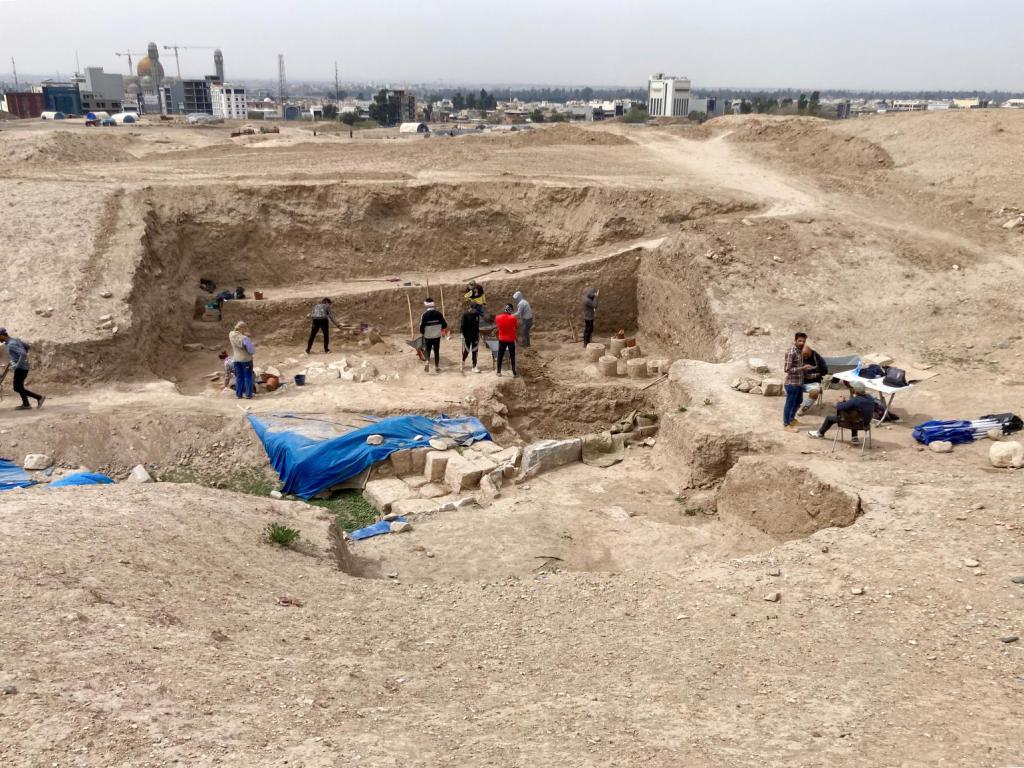A team of German archaeologists excavating in the ancient city of Nineveh, located near the modern Iraqi capital of Mosul, have announced an “extraordinary” discovery within the throne room of the North Palace of King Ashurbanipal: remnants of a monumental relief that depicts the fabled ruler of the Assyrian empire alongside two deities.
According to a statement from Heidelberg University, the relief was carved on a stone slab measuring 5.5 meters long and 3 meters high, and weighing some 12 tons. Professor Aaron Schmitt of the Institute of Prehistory, Protohistory and Ancient Near Eastern Archaeology, said that not only the size of the slab, but the story it tells makes this a standout among the discoveries his team has made since excavations began in 2018 as part of the Heidelberg Nineveh project.
Related Articles

“Among the many relief images of Assyrian palaces we know of, there are no depictions of major deities,” he said.
Nineveh established itself as one of the most influential cultural capitals in the ancient world under King Sennacherib, around 700 BCE. The Assyrian Empire, already battered by a civil war, fell in 612 BCE to a joint assault from its former subjects, the Babylonians, Medes, and Scythians. Nineveh never reclaimed its power in the ancient world but still played pivotal role in enshrining the arts and sciences as pillars of modern human civilization.
Schmitt and his team had previously excavated the Kuyunjik mound in the core of the North Palace built by Ashurbanipal, who ruled from 669 BCE until his death around 631 BCE, and is considered the empire’s last great leader. The site itself has seen archaeological activity since at least the end of the 19th century, when British researchers found the first of the large-scale reliefs within the North Palace, which are now housed in London’s British Museum.
The newly discovered relief depicts King Ashurbanipal in a divine conference with two preeminent Assyrian deities: Ashur and Ishtar, the latter of whom was the patron goddess of Nineveh. The three are accompanied by a mythological figure known as a fish genius, which was granted gods and sovereigns salvation and longevity.
“These figures suggest that a massive winged sun disk was originally mounted above the relief,” Schmitt said, adding that further investigation into the relief will be undertaken in the coming months.

